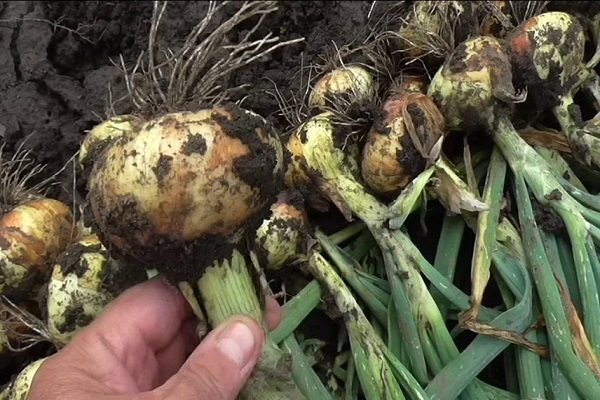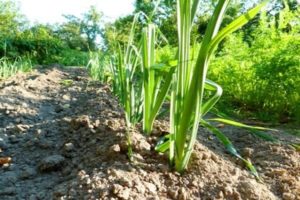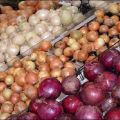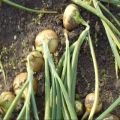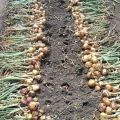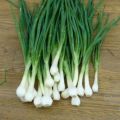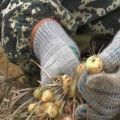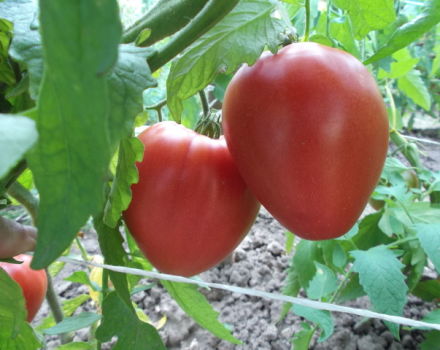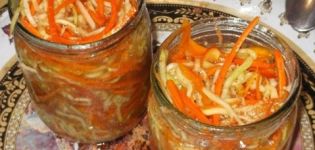Growing, caring for and feeding onions on a turnip in the open field
When growing onions for a turnip, you need to follow a number of agrotechnical techniques and take special care. In this case, there will be no problems at any stage of plant development, and the crop will delight you with its quality and quantity. First of all, you need to choose the most suitable method for planting onions.
Features of culture
Onions are one-, two- and three-year-old plants. Onion sets are obtained from vegetable seeds, which are called nigella, in the first year. The sevok is small, 2 cm in diameter and weighs about 5 g. Already in the second year, large onion heads are obtained from the set. If you plant such an onion in the third year, then you can get seeds - nigella.

There are many advantages to growing turnip onions from sets. A rich harvest of large heads can be harvested already 75 days after the first shoots appear. This vegetable does not require frequent watering and thinning. Onions grown from sets are well stored for a long time.
The main criterion when planting onions on a head in open ground is the soil temperature. It is better to wait until the top layer warms up to +12 degrees. If you plant onions in cold soil, many arrows will form, and the turnip will be small and such a crop will not be stored for long.
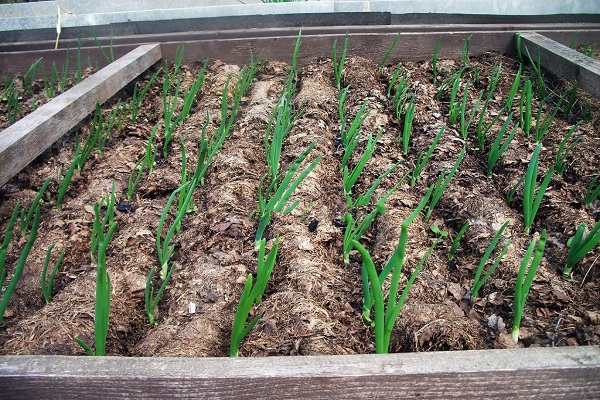
The planting material is taken without fail. The bulbs should be smooth, firm, free from stains and unpleasant odors. It is better to select the largest heads, in the future they form little arrows, they tolerate cold well and quickly grow.
The planting material is disinfected. For this purpose, the bulbs are kept for some time in a weak solution of potassium permanganate, copper sulfate or table salt.

Soil preparation
For planting and care in the open field, choose a well-lit area where groundwater does not pass. It is better if the soil is loamy. Onions thrive in neutral soil. If the soil is acidic, then wood ash must first be added. Two years before sowing a vegetable, you can liming the prepared soil. The best precursors for onions will be cabbage, cucumbers, potatoes, tomatoes.
In the fall, the land for growing seedlings in the open field is freed from plant residues and weeds are removed. After that, the soil is watered so that the remaining shoots of weeds come out again. Then they start digging. The deepening of the shovel should be at least 25 cm.
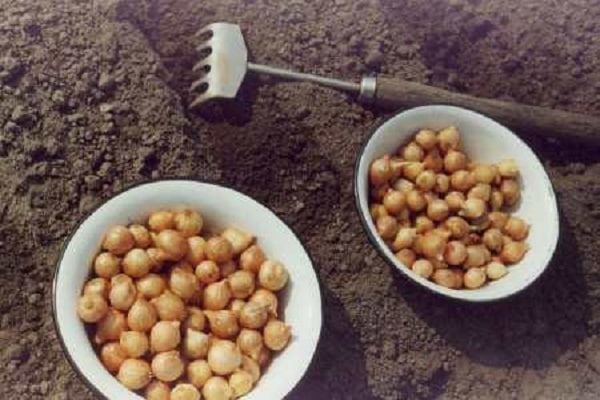
During the autumn digging, it is advisable to add humus or compost. For each square meter, it is recommended to add about 5-6 kg of humus. If there are not enough nutrients in the soil, then urea, superphosphate and potassium fertilizers must also be added.
In the spring, before planting the seedlings, nitroammofoska is introduced during loosening.They begin to plant onions on their heads in open ground in the first half of May, when the weather is warm. The main thing is that the soil warms up and is not lower than + 12 degrees.
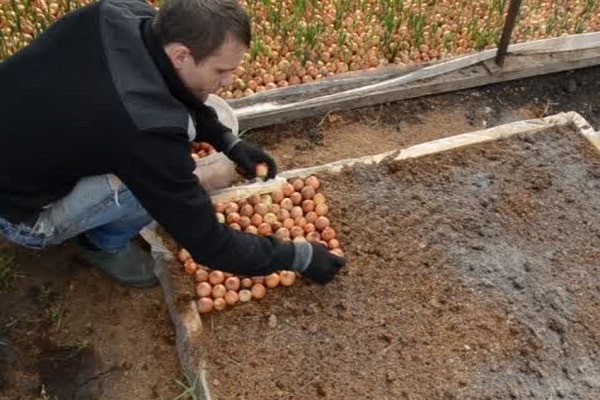
Which variety should you choose?
When choosing a type of spicy vegetable, you need to consider some characteristics.
- According to the ripening period, early (the bulb is formed in about 92 days), medium (the development period lasts about 110 days) and late (ripening occurs after 120 days) varieties of onions are distinguished. Some bulbs are grown for greenery, others are intended for growing on a turnip.
- The size of the fruit can be from 50 g to 350 g.
- In terms of taste, they distinguish spicy, semi-sharp and sweet varieties of vegetables.
For growing onions for a turnip, early varieties with the formation of one bulb are chosen from seeds, for example, Odintsovets, Red Baron, Strigunovsky, Kaba, Tsitaussky, Shaman, Centaur, Delight, Crimson ball.
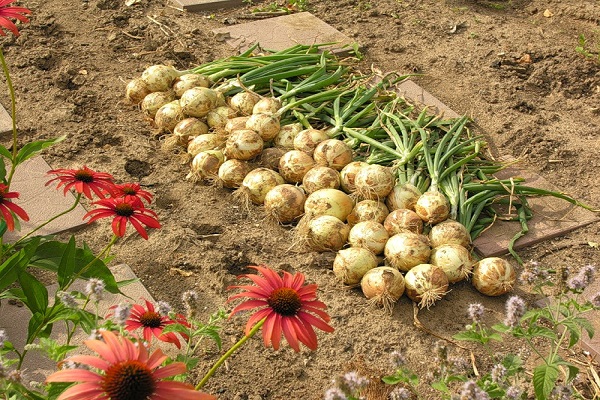
Selected seeds are sown in pre-prepared 1.5 cm deep grooves around the end of April. The site must be well lit. After emergence, thinning begins.
Poorly growing turnips need to be fed on time. Correctly selected fertilizers allow you to collect a large and bountiful harvest, as well as prevent a number of diseases and pests. A vegetable needs a sufficient amount of phosphorus, potassium and nitrogen.
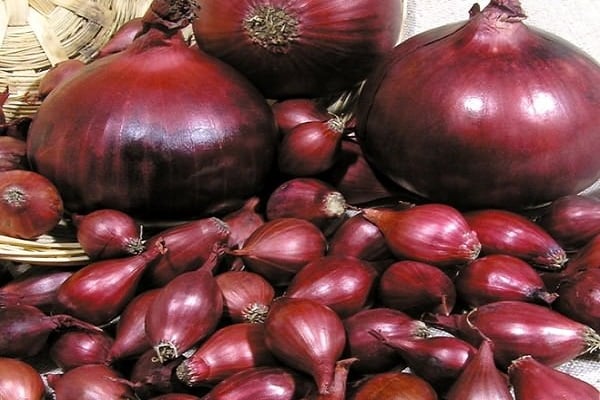
Onions most often form many arrows as a result of early planting in poorly heated soil, improper storage of planting material, or if the head size exceeds 3 cm.It is better to cut off the formed arrows at the very base, otherwise they will not allow juicy and large heads to form.
Is it possible to plant onions on the head in July? It is possible, only onions grown from sets are used as planting material. Only dense, large bulbs are selected. The only difference in maintenance will be frequent watering of the beds. In this case, the greenery will delight all autumn. The bulb will be suitable only for consumption immediately after harvest; it is not removed for storage.
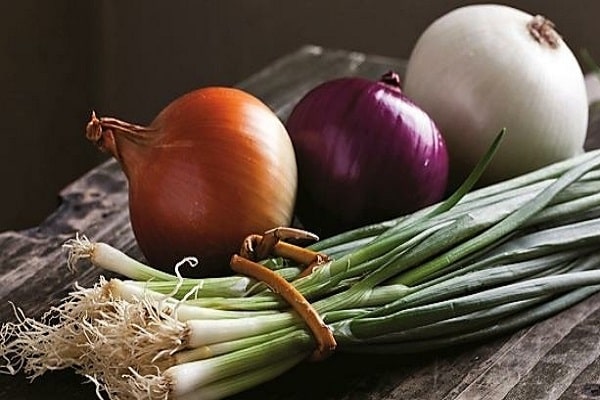
When to plant?
It is very important to choose the right term, when to plant onion sets on the head in open ground... Planting begins at a soil temperature of at least +12 degrees. At cold air temperatures and cold soil, the green mass begins to actively develop in the onion, while the underground part remains weak and underdeveloped. A lot of arrows with seeds are formed, which will take all the nutrients and moisture for their ripening.
In central Russia, where the climate is not characterized by stable warm weather, they begin to plant sevok in early May. In the southern regions, you can start planting a little earlier, at the end of April. In the northern regions, planting onions is best left until mid-May.
Processing of the site begins in the fall. They dig deeply and apply organic and mineral fertilizers. The best soil is considered to be loamy or black earth composition.
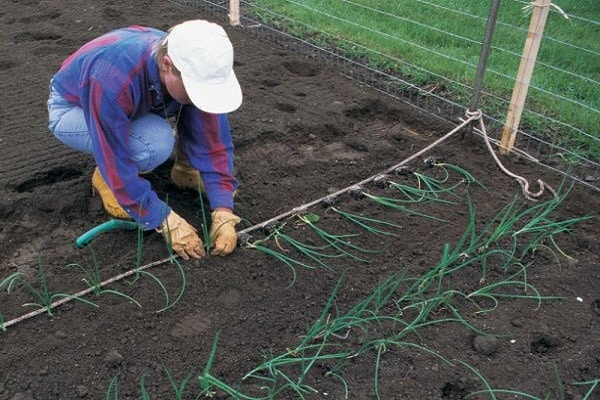
Landing
For a turnip onion in open ground, loose, not acidified, fertile soil is considered the best. Planting onions in the spring on the head is most often carried out in one line. On the land plot, grooves are marked with a depth of 6 cm, the distance between them should be about 14 cm.The interval between the bulbs themselves depends on their size. If the heads are large, then the distance should be at least 10 cm.If the heads are small, then 6 cm is enough.
The bulbs should not be buried too deeply in the ground. It is enough to slightly deepen and cover with a small layer of soil. After planting, the beds are watered and mulched with sawdust or straw.
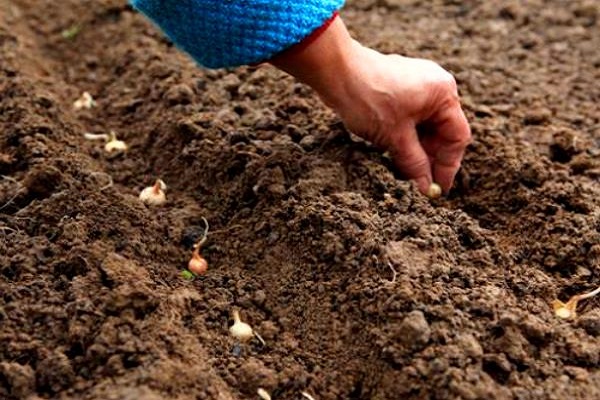
Already on day 10, the first shoots appear. In order for oxygen and nutrients to be evenly distributed in the soil and quickly penetrate to the roots, loosening must be carried out. It is imperative to carry out weeding in order not to start the spread of weeds.
Onion heads begin to be stored for storage only after the final ripening and drying of the harvested crop. Otherwise, the crop will not be stored and will start to rot.
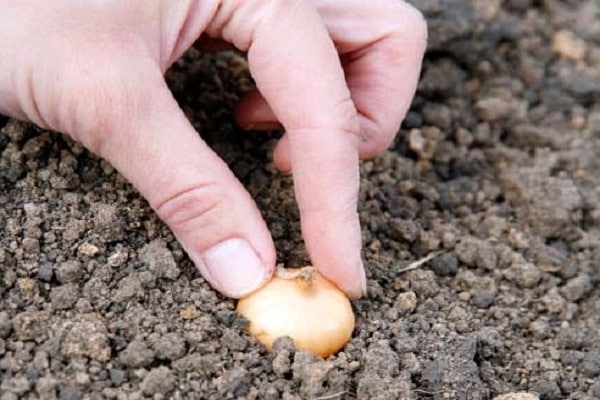
Care
The first feeding of onions on a turnip is carried out 14 days after germination. If the feather is pale, weak and sluggish, then fertilizer can be applied earlier. Usually, root watering is used with a solution based on urea or nitroammophos.
The second feeding is carried out after another three weeks (usually coincides with the second half of June). During this period, it is important to replenish the soil with potassium-phosphorus reserves. You can prepare a solution of superphosphate and potassium salt.
How to feed an onion head in Julyso that it grows large and juicy? If the soil is not sufficiently enriched with micronutrients, then there is a need for a third feeding. It is best to apply complex fertilizers. The ideal option is the ready-made complex Agricola 2, Giant, Effekton.
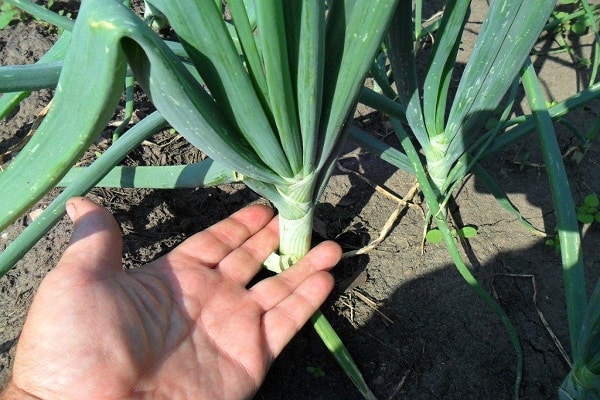
Watering the beds with onions should be moderate. The first weeks after germination, watering is enough once every two weeks. If the weather is hot, without rain, then the frequency of irrigation is increased to once a week. Loosening should be done after watering to prevent crust formation.
In case of violation of agrotechnical techniques and improper care, the risk of developing diseases increases. Onions are most often affected by a fungal infection (powdery mildew, root rot). Pests such as onion flies, moths, and nematodes may also appear.
When the length of the feathers reaches 15 cm, it is recommended to carry out preventive treatment of the beds with copper sulfate from pests. Take 10 g of copper sulfate and 15 ml of liquid soap on a bucket of water. You can sprinkle the beds with wood ash or tobacco dust.

Harvesting and storage
It is very important to harvest the turnip and feathers at the right time. There are many ways to determine when onions will ripen. Most often they are guided by external signs. The feather begins to turn yellow, dry, curl, most of the tops lie on the ground. The neck of the bulb becomes thinner and dries out. The bulb is covered with a golden, rustling husk.
Two weeks before harvesting, they stop, watering the onion heads and applying top dressing. This will allow the nutrients to concentrate in the turnip and not in the tops. Some gardeners rake the ground near the bulbs, slightly exposing them. This procedure allows heat and light to penetrate more quickly to the underground part of the plant.
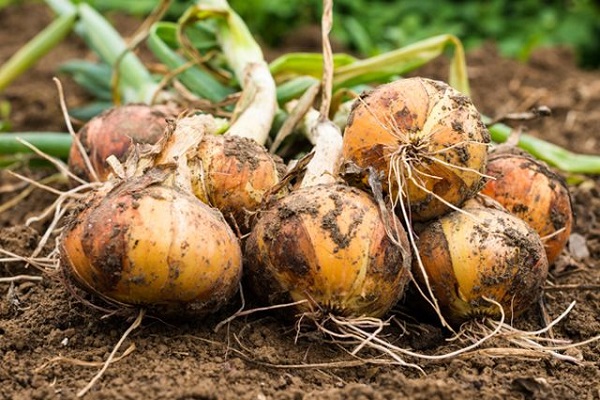
Harvesting is best done in dry, warm weather. It is not recommended to pull out the onion by hand, as you can damage the bottom and break off the tops. Better to dig with a pitchfork or shovel. Shake the adhering dirt from the heads, but do not beat the bulbs against each other.
The harvested crop is laid out on sheets of cardboard or plywood in one layer directly on the beds, allowing it to dry out under the rays of the sun. If the weather is rainy, then the onions should be dried in a dry room, where fresh air penetrates.
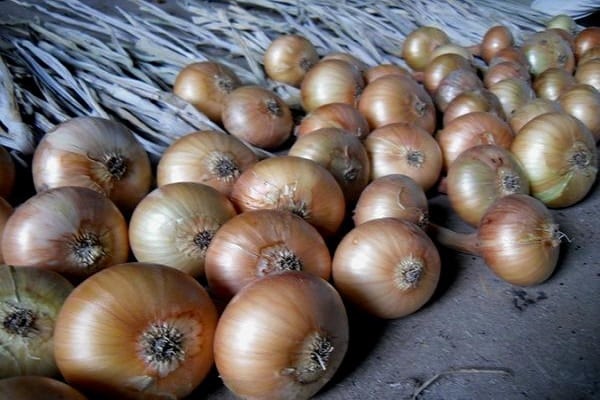
The onion dries completely in about two weeks. After that, they begin to trim the tops, leaving a stump of 5–6 cm. If it is supposed to braid the tops in braids and hang them, then a length of about 10 cm is left.
It is better to store the heads in wooden boxes, cardboard boxes, cloth bags or nets. You need to iterate over them periodically. In the fall, after harvesting, the site is dug up, all plant residues are removed from the garden and fertilized.
